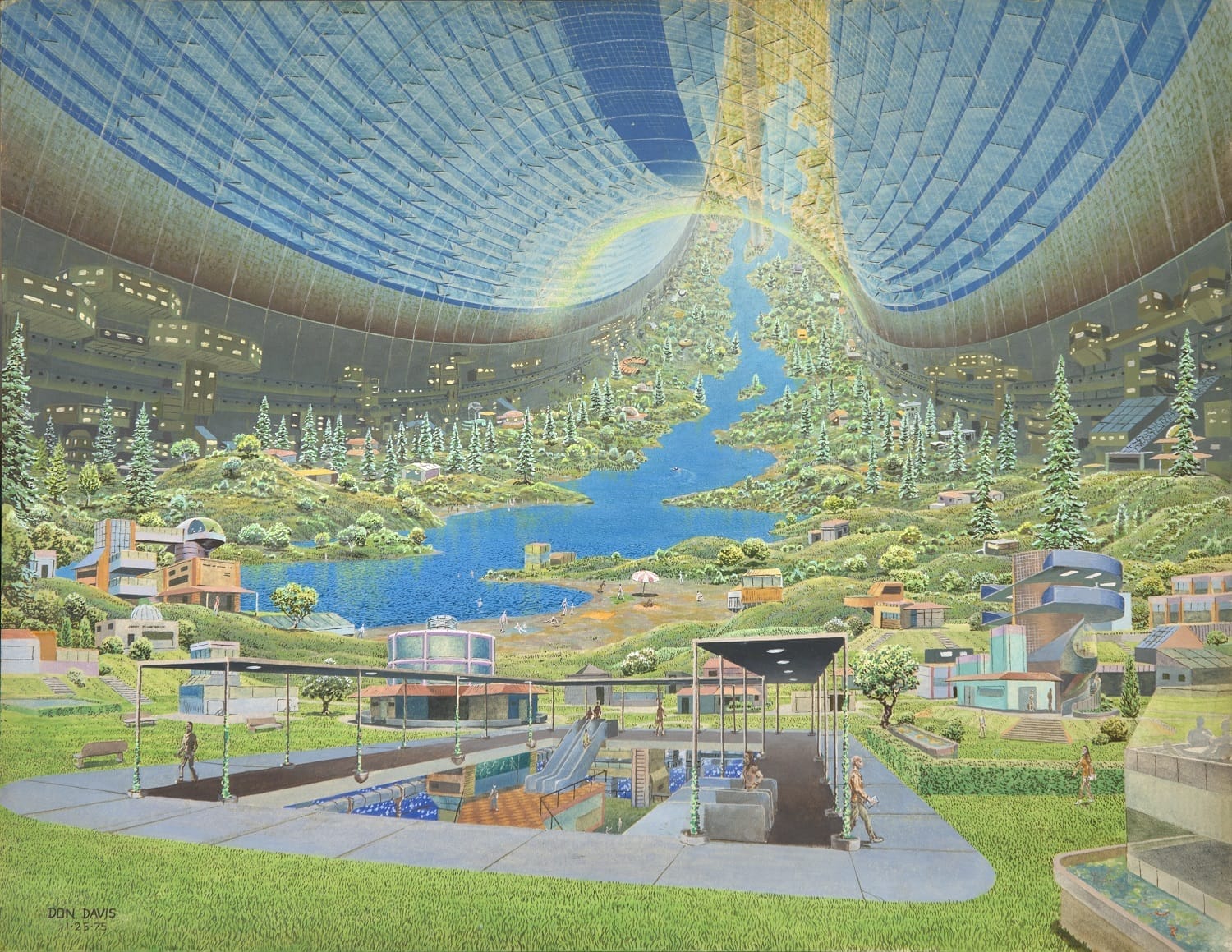Emerging Ecologies: Architecture and the Rise of Environmentalism, is an exhibition dedicated to both realized and unrealized projects that address ecological and environmental concerns by architects who practiced in the United States from the 1930s through the 1990s. It will be on view through January 20, 2024, in the Museum’s Third Floor North Galleries, Emerging Ecologies features over 150 works that reconstruct how the rise of the environmental movement in the US informed architectural practice and thought. Models, photographs, diagrams, and sketches are placed in context with archival materials such as posters, flyers, and articles to showcase innovative, fantastical, dystopian, and daring architectural projects that sought to navigate the fraught relationship between the built and natural environment.
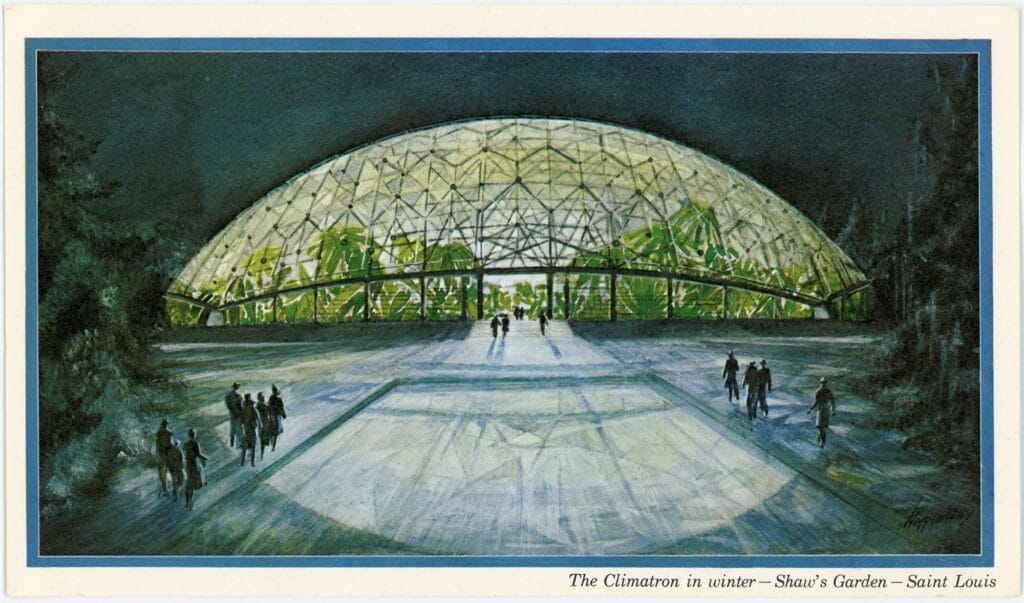
The exhibition celebrates the pathbreaking environmentally conscious work of architects like Emilio Ambasz, Charles and Ray Eames, and Frank Lloyd Wright, while shining a light on many less familiar, historically significant practices like The New Alchemy Institute, Glen Small, and Mária Telkes. Seven newly commissioned audio recordings that draw inspiration from these little-known projects will feature contemporary practitioners—Mae-ling Lokko, Jeanne Gang, Meredith Gaglio, Charlotte Malterre-Barthes, Amy Chester, Carolyn Dry, and Emilio Ambasz—sharing their thoughts on what contemporary architects can do to mitigate against climate change. By highlighting projects that both foreshadowed and anticipated the ecological effects of overpopulation, the depletion of natural resources, and rampant industrial pollution, the exhibition looks to the past to suggest solutions for the future. Emerging Ecologies: Architecture and the Rise of Environmentalism is organized by Carson Chan, Director, the Emilio Ambasz Institute for the Joint Study of the Built and Natural Environment, and Curator, Department of Architecture and Design, with Matthew Wagstaffe and Dewi Tan, Ambasz Institute Research Assistants, and Eva Lavranou, 12-Month Intern, Ambasz Institute.

Emerging Ecologies presents projects in five thematic groupings that illustrate the development of environmental thinking in architecture: Environment as Information; Environmental Enclosures; Multispecies Design; Counterculture Experiments; and Green Poetics. The exhibition will highlight several different approaches proposed by architects from the 1930s through the 1990s, beginning with an introduction that includes a model of Frank Lloyd Wright’s Fallingwater, Edgar J. Kaufmann House, Mill Run, Pennsylvania (1934–37), which was built before the rise of environmentalism but served as a key inspiration in the pursuit to build in concert with natural systems. This introduction also considers key moments in the history of environmental justice as acts of architecture. Archival materials, including posters and photographs from the Orme Dam Protest March in 1981, are presented to emphasize that preventing a structure from being built is as much an act of architecture as building one. Ten years of protests by the Fort McDowell Yavapai Nation stopped the construction of the Orme Dam, which would have flooded more than half of their reservation and destroyed the habitat of many species, including the bald eagle.
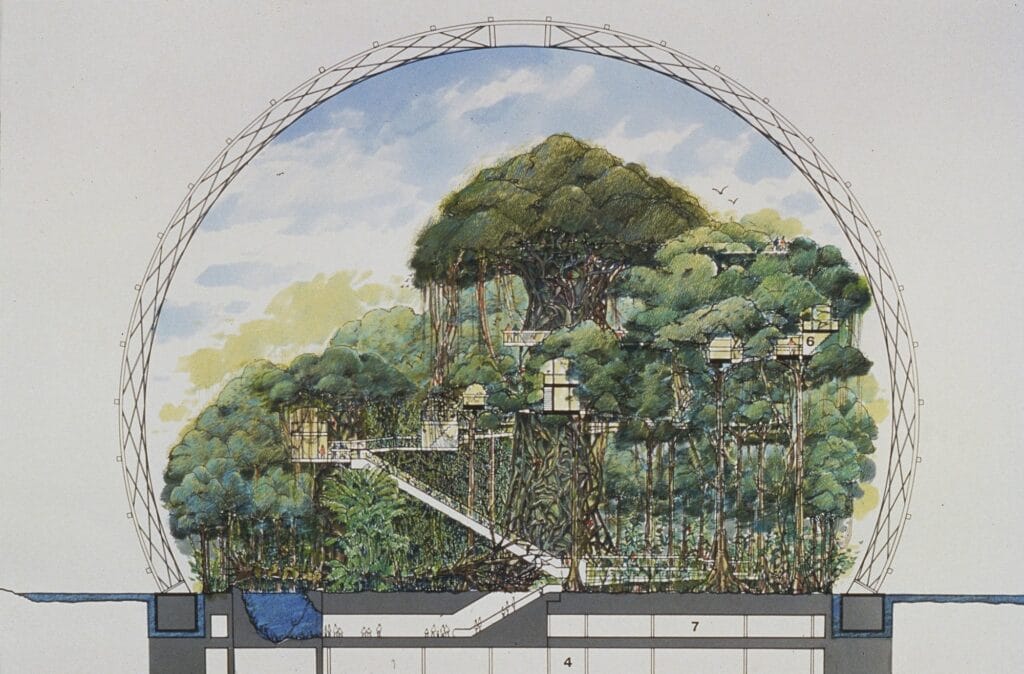
Environment as Information
During the rise of environmentalism, architects were key players in the development of metrics and analytical tools that rendered the environment knowable and thus designable, making it something important to be monitored and governed. R. Buckminster Fuller’s World Game was conceived in 1967 as a computer system in which people can see the movement of raw resources, including cotton, gold, coal, and wood, to provide humankind with tools for efficient environmental management. This section includes Beverly Willis’s environmental data work, featuring several early computer printouts—showing drainage maps, site physiography, and site geology and soils from 1971—from Willis’s Computerized Approach to Residential Land Analysis (CARLA), which sought to turn analog land analysis methods into computational design tools.
Environmental Enclosures
Projects that utilized data to create and construct their own ecosystems serve as an anchor for the early works shown in the exhibition. A group of rarely seen, hand-painted illustrations from NASA, called Space Settlements: A Design Study, investigate the possibility of limiting resource consumption on Earth by designing self-regulating, closed ecosystems in space. Developed in 1975 through a collaborative effort between physicists, engineers, social scientists, architects, urban planners, and illustrators, the project is a collection of studies, tracking diagrams, resource flows, and images that was sponsored by Stanford University and the NASA Ames Research Center.
Counterculture Experiments
By designing spaces that enabled people to be personally involved in the provisioning of their energy and foodstuffs, architects included in this section of the exhibition considered a new lifestyle that sought alternatives to the environmentally destructive, consumerist model prevalent in the US. The New Alchemy Institute’s ark projects were off-grid structures that housed people and provided for all of their needs, including food and heat, in one ecosystem. Posters, site maps, and photographs present their 1975 project on Prince Edward Island, which was commissioned by the Canadian government, alongside articles and journals that documented the project.
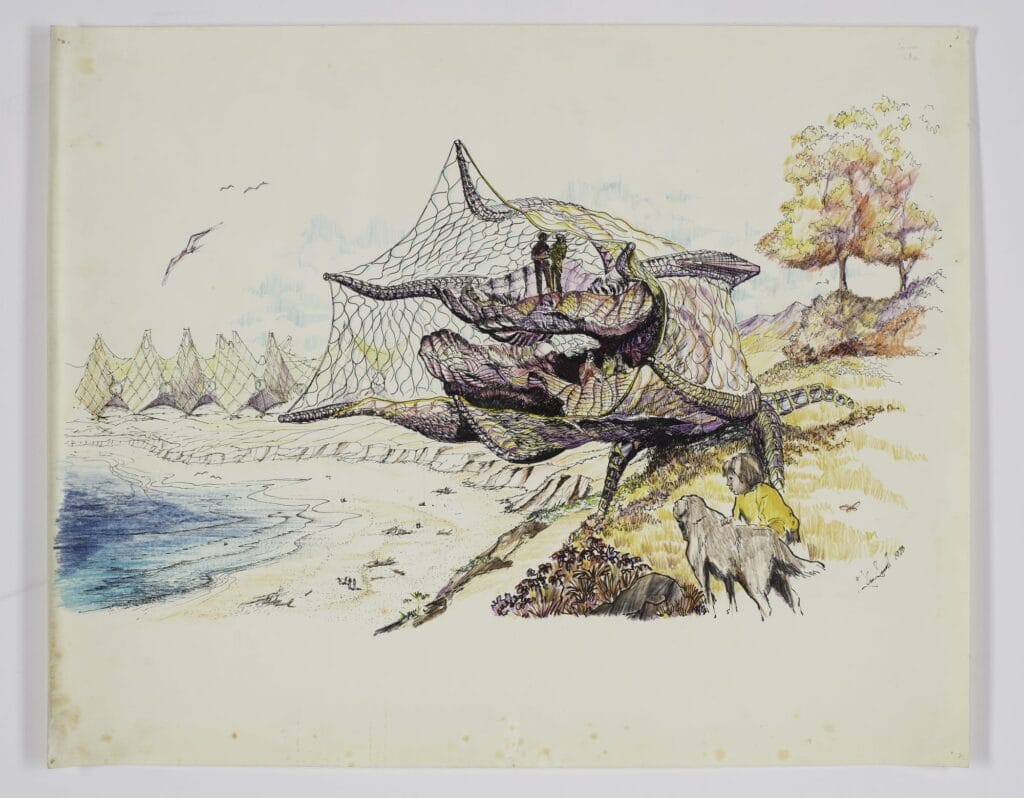
Multispecies Design
Ant Farm’s project Dolphin Embassy takes this counterculture approach a step further, exploring the possibilities of a multi-species society. In 1975, the avant-garde environmental design collective proposed the construction of a floating research station designed to facilitate collaboration between humans and cetaceans, after being inspired by the work of dolphin researchers John C. Lilly and Margaret Howe Lovatt. Drawings, books, and archival materials demonstrate how this experimental project sought to enable new forms of space and interaction between humans and other species.
Green Poetics
While many of the architects featured in the exhibition concerned themselves with practical questions like solar orientation and composting toilets, other designers focused on the aesthetic dimensions of ecological architecture. Works by James Wines, including drawings and models of Forest Building, Richmond, Virginia (1978) and plans for Highrise of Homes (1981), showcase novel approaches to the integration of these two systems. Similarly, Emilio Ambasz’s Fukuoka Prefectural International Hall (1990) features green terraces that step up the facade of the building and act as natural ventilation systems while also providing the community with green space. These projects combine natural forms with more conventional architecture design to make ecological living a meaningful experience.
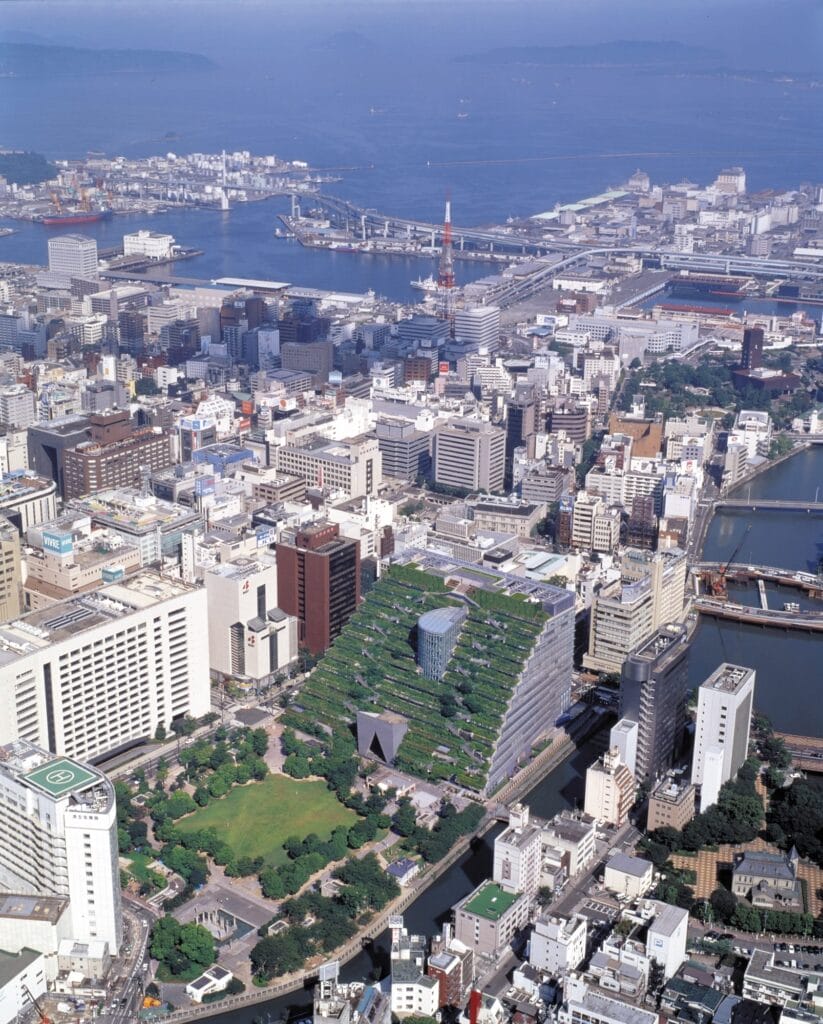
PUBLICATION: Published to accompany the exhibition, Emerging Ecologies: Architecture and the Rise of Environmentalism, by Carson Chan and Matthew Wagstaffe, studies the role architects have played in defining our understanding of “nature” and the “environment,” specifically during the rise of environmental discourse. The richly illustrated publication presents over 45 architectural contributions, from Eleanor Raymond and Mária Telkes’s groundbreaking work on solar houses to Buckminster Fuller’s world resource management system and the environmental symbolism of Emilio Ambasz. Through an introductory essay and brief texts on each of the featured projects, Emerging Ecologies documents the proximity between ecology, design, and statecraft.
